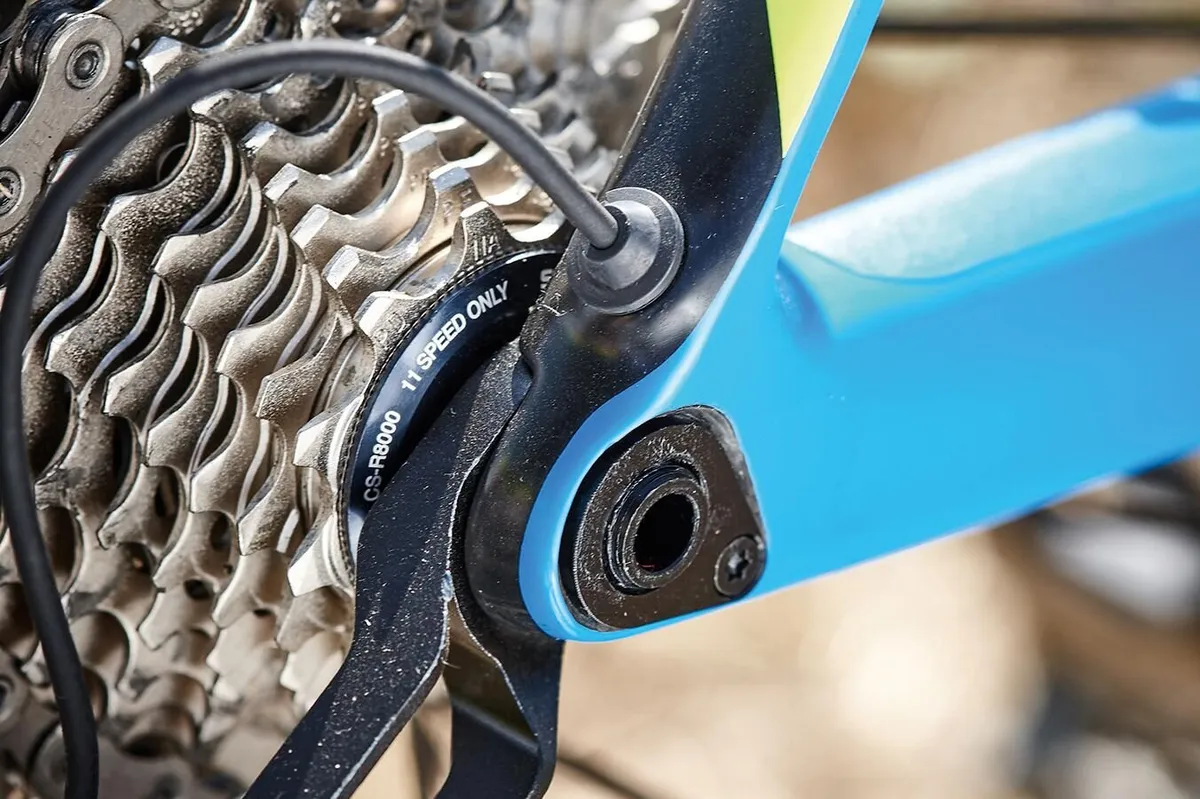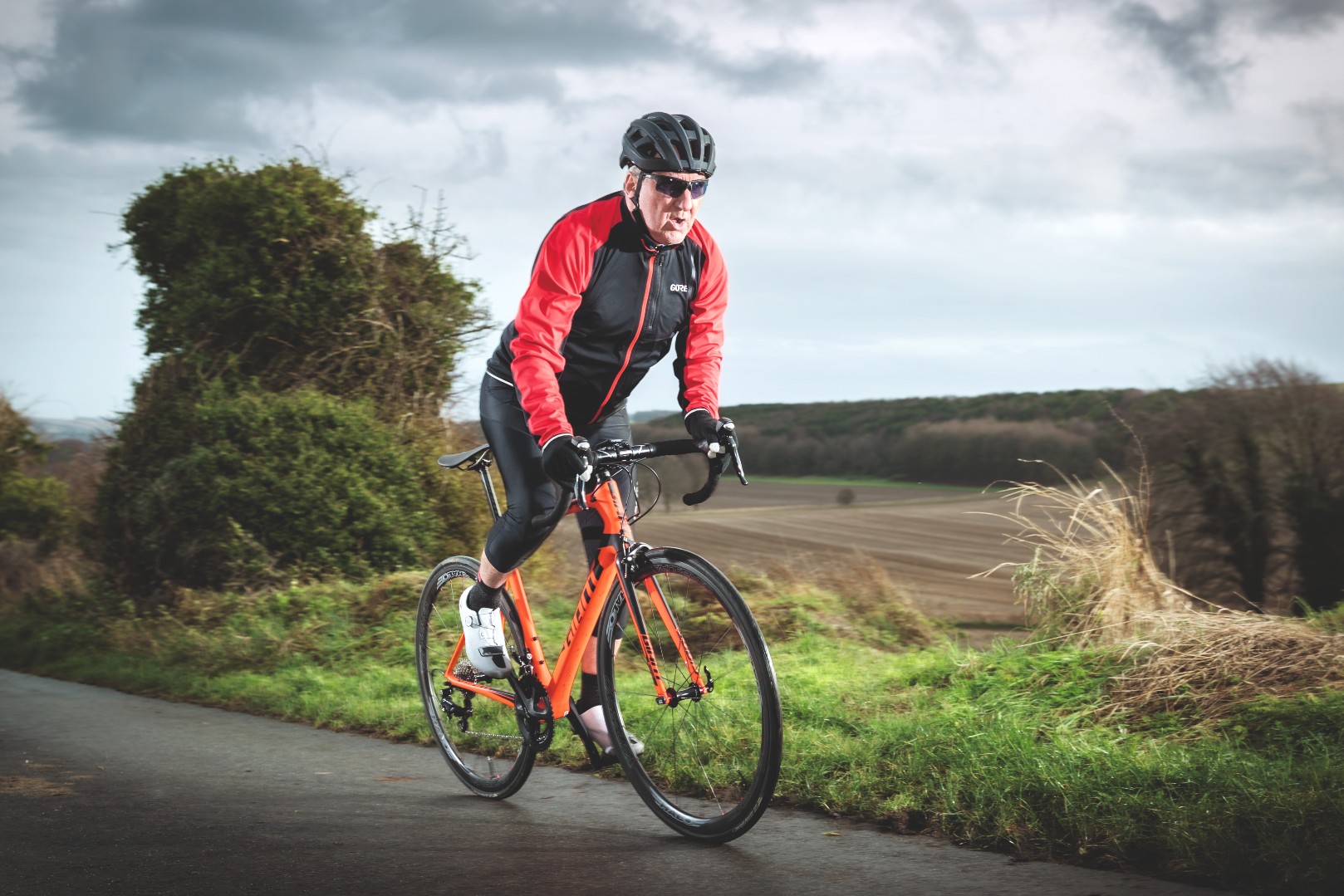There was a time when BMC’s bikes cut a unique swathe through the peloton or on the streets. Their dropped seatstays would mark out a BMC machine at 100m.
They’re less distinctive now that other brands have also lowered and slimmed down their seatstays and BMC bikes have lost their little hollow triangle at the join of the top tube and seat tube. What they still retain is a pro race-developed huge polygon down tube, expanding from around 60mm wide at the head tube to nearer 80mm where it morphs seamlessly into the PF86 bottom bracket shell. For BMC, big really does mean beautiful.
Less obvious is the asymmetric fork, with the disc side noticeably both deeper and wider, to cope with the forces generated by braking.

It’s easy to understand how BMCs have won Olympic, Tour de France and World titles. This bike is fast, stiff and aggressive. Some bikes are made for pootling through the countryside taking in the sunshine and scenery. This is not one of them.
This is made for powering away from your competitors; aside from being quick, it handles as nimbly as you’d expect and accelerates superbly. The word ‘responsive’ is a favourite of bike reviewers, but it’s hard to avoid it when describing the BMC.
Put the power down and ‘whoosh’, you’re off down the road. Crest a peak, point it downhill and its power and pinpoint control are uncompromising. Though compared with some bikes around this price, and BMC’s own SLR01, you do feel more road imperfections, even with the seatstays’ (second cliché alert) ‘vertical compliance-increasing’ properties.

Some testers might take electronic shifting for granted. But if you’re new to it, or haven’t used Shimano’s Ultegra Di2 for a while, it can still be a wow-inducing experience.
Shifting is swift, slick, accurate and forgiving if you get the timing wrong. It’s virtually silent, apart from the delightful Star Trek-like electrical buzz of the self-trimming, chain rub-preventing front mech.
BMC has been clever in housing the Di2. It’s so very, er, Swiss, being efficient and neat. The junction box is tucked away in the down tube, the battery snug in the D-profile carbon seatpost. There are no unsightly boxes and the under-down-tube seatpost bolt clamp is angled for better access. I liked the flattened ergo tops of the compact bend handlebar too.

As you’d hope at £4,300, the BMC gets a full Ultegra Di2 groupset. The hydraulic braking is as impressive as the shifting, its finned rotors preventing heat build-up on prolonged descents and keeping noise levels down. Mine stayed resolutely silent throughout testing.
The same isn’t true for the DT Swiss wheels, which have a lovely and loud ‘clickety-click’ freewheel. Start pedalling, however, and the drivetrain becomes as smooth and silent as the braking.
The wheels aren’t the lightest, but they’re stiff, have aero-bladed spokes and come tubeless-ready with rim strips. The Vittoria Rubino tyres were fine in the dry, coped with light, packed gravel (not their natural stomping ground), but I haven’t found them perfect in wetter conditions.
There’s little to fault with the BMC. It has a fast, responsive and thrilling ride, with fautless braking and shifting. Who needs Dura-Ace? But the firm ride isn’t as smooth as some and similarly equipped bikes from some other big-name brands will cost you less.
BMC SLR02 Disc One specifications

- Weight: 8.06kg (56cm)
- Frame: Teammachine ACE carbon
- Fork: Full carbon, 12mm thru-axle
- Cranks: Shimano Ultegra, 52/36
- Cassette: Shimano Ultegra, 11-30
- Mechs: Shimano Ultegra Di2
- Shifters: Shimano Ultegra Di2
- Brakes: Shimano Ultegra hydraulic, 160/140mm rotors
- Wheels: DT Swiss P1850 Spline
- Tyres: 25mm Vittoria Rubino Pro
- Stem: BMC
- Bar: BMC
- Seatpost: ‘D’ carbon
- Saddle: Fizik Antares R7

